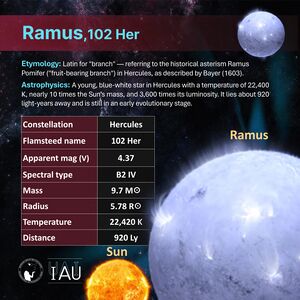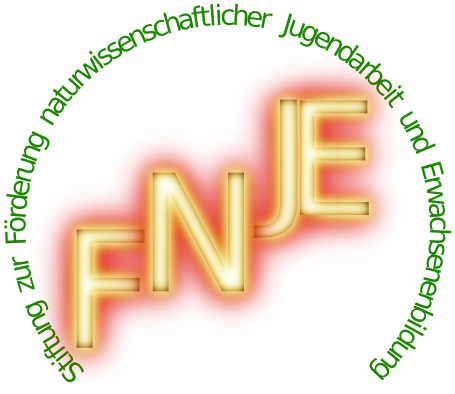Ramus: Difference between revisions
No edit summary |
|||
| Line 33: | Line 33: | ||
According to legend, the apples were guarded by the dragon Ladon, and it was one of the challenges for a hero to defeat this dragon and steal the apples. Heracles was supposed to bring the apples to King Eurystheus, which he managed to do by means of a ruse. He persuaded Atlas, the uncle of the beautiful girls ‘Hesperides’, to pick the apples in their garden (so that neither them nor their dragon would suspect anything), and Heracles, who would have been perceived as a foreign intruder, briefly carried the celestial sphere for Atlas. After Heracles had handed the apples over to King Eurystheus and completed his eleventh feat, the king gave them to the goddess Athena, who returned them to the garden of the Hesperides, where they belonged. |
According to legend, the apples were guarded by the dragon Ladon, and it was one of the challenges for a hero to defeat this dragon and steal the apples. Heracles was supposed to bring the apples to King Eurystheus, which he managed to do by means of a ruse. He persuaded Atlas, the uncle of the beautiful girls ‘Hesperides’, to pick the apples in their garden (so that neither them nor their dragon would suspect anything), and Heracles, who would have been perceived as a foreign intruder, briefly carried the celestial sphere for Atlas. After Heracles had handed the apples over to King Eurystheus and completed his eleventh feat, the king gave them to the goddess Athena, who returned them to the garden of the Hesperides, where they belonged. |
||
In the sky, the figure of Heracles is portrait as if he steped on the dragon's head. This image might be mnemonic but in fact, the constellations of Draco and Hercules were independent creations: Draco is not a representation of Ladon but of Python, the huge serpent that god Apollon killed and buried in Delphi to inspire the oracle. Astronomically, Draco represents the circle around the pole of the ecliptic |
In the sky, the figure of Heracles is portrait as if he steped on the dragon's head. This image might be mnemonic but in fact, the constellations of Draco and Hercules were independent creations: Draco is not a representation of Ladon but of Python, the huge serpent that god Apollon killed and buried in Delphi to inspire the oracle. Astronomically, Draco represents the circle around the pole of the ecliptic. Hercules is a Graeco-Roman renaming of an older (and then not understood, foreign) Mesopotamian deity in that area of the sky, in fact, a Mesopotamian mixture of several even older deities. |
||
==IAU Working Group on Star Names== |
==IAU Working Group on Star Names== |
||
Latest revision as of 23:28, 18 July 2025
Ramus, the branch or bough, is an addition to the early modern asterism Cerberus in Hercules. The name occurs in Bayer (1603) as a term but in depiction only later. Since 2025, "Ramus" is the IAU-star name for 102 Her.
Etymology and History
Some of the following material is drawn from the "Medieval and Early Modern Europe" discussion on Hercules:
Medieval and Early Modern Europe

Traditionally, Hercules carries a lion's skin and a club. Yet, in Early Modern Europe, all sorts of variants occurred: instead of the skin that was supposed to protect him, he then was depicted with branches of apples or instead of branches with a three-headed snake in his hand.
The creature with the three heads was typically labelled "Cerberus" although the ancient Kerberos/ Cerberus had dog-heads and not snake-heads.
The branch with the apples resembled the myth according to which he stole the "golden apples" as one of his celebrated deeds.
John Senex even labelled the apples, as Ian Ridpath points out:[1]
Hercules holds Ramus, the apple branch, and Cerberus, the three-headed monster, in his outstretched hand, as depicted by the English cartographer John Senex (1678–1740) on his chart of the northern celestial hemisphere, Stellarum Fixarum Hemisphaerium Boreale, published 1721/2. This chart was based on the pirated edition of John Flamsteed's unfinished star catalogue that had been published by Edmond Halley in 1712. Senex called the combined figure Ramus Cerberus, and it appeared again on his planisphere of the northern sky issued posthumously in 1746. Johann Bode adopted the combined figure on his Uranographia atlas of 1801 but changed its name to Cerberus et Ramus, and that is the name by which it became most widely known.
Bode's map in the Uranographia (1801) is available in the digital collection of ETH Zurich.
Stars in "Cerberus et Ramus"
Cerberus et Ramus is dominated by approximately 14 stars brighter than 6th magnitude, of which 4 dominate which are brighter than V magnitude 4.5. In order of brightness, they are:
- 109 Her (HIP 90139, HD 169414, HR 6895; Vmag = 3.85, K2III, d = 37pc),
- 110 Her (HIP 92043, HD 173667, HR 7061; Vmag = 4.19, F5.5IV-V, d = 19pc),
- 111 Her (HIP 92161, HD 173880, HR 7069; Vmag = 4.34, A3IV, d = 29pc),
- 102 Her (HIP 88886, HD 166182, HR 6787; Vmag = 4.37, B2IV, d = 357pc).
Mythology
Heracles (Hercules) was an archetypal hero: according to the usual topos, he had to perform numerous heroic deeds to prove himself and atone for past sins.
One of his legendary deeds was to steal the ‘golden apples of the Hesperides’ (Ἑσπερίδες, Hesperídes). The goddess of the earth, Gaia, had grown them for the goddess of the sky, Hera, for her wedding to the weather god (and later father of the gods) Zeus. They were, therefore a wedding gift from the earth to the sky. The apple tree that bore these apples was located at the westernmost point of the world (geographically, this meant that it was located in different places over the centuries as the Greeks' knowledge of geography grew), and this is also where the Hesperides lived (Ἕσπερος Hesperos, a brother of Atlas, who carries the celestial sphere, is also associated with the evening star).
According to legend, the apples were guarded by the dragon Ladon, and it was one of the challenges for a hero to defeat this dragon and steal the apples. Heracles was supposed to bring the apples to King Eurystheus, which he managed to do by means of a ruse. He persuaded Atlas, the uncle of the beautiful girls ‘Hesperides’, to pick the apples in their garden (so that neither them nor their dragon would suspect anything), and Heracles, who would have been perceived as a foreign intruder, briefly carried the celestial sphere for Atlas. After Heracles had handed the apples over to King Eurystheus and completed his eleventh feat, the king gave them to the goddess Athena, who returned them to the garden of the Hesperides, where they belonged.
In the sky, the figure of Heracles is portrait as if he steped on the dragon's head. This image might be mnemonic but in fact, the constellations of Draco and Hercules were independent creations: Draco is not a representation of Ladon but of Python, the huge serpent that god Apollon killed and buried in Delphi to inspire the oracle. Astronomically, Draco represents the circle around the pole of the ecliptic. Hercules is a Graeco-Roman renaming of an older (and then not understood, foreign) Mesopotamian deity in that area of the sky, in fact, a Mesopotamian mixture of several even older deities.
IAU Working Group on Star Names
The names "Cerberus" and "Ramus" (or combinations) were suggested to WGSN in 2023. The name "Cerberus" is already in use by the IAU for asteroid (1865) Cerberus, and the spelling variant Kerberos was adopted by the IAU for the satellite (134340) Pluto IV, discovered in 2011. The name "Ramus" was adopted for 102 Her in June 2025.
Weblinks
Reference
- ↑ Ian Ridpath, Star Tales (Online Edition), Cerberus et Ramus






